

| Ten common Nottinghamshire moths by month |
| March |
| The number of moths flying during
February, is augmented in March by an increasing number
of emerging early Spring species and by now, chosing ten
most likely moths to be recorded is becoming slightly
more difficult. Consequently, it will now be a good idea to refer to the moths listed for the previous and following months as the year progresses. The following selection of moths is based on those most likely to turn up at moth traps operated in suburban habitats. Running any MV light trap in deciduous woodland, will obviously provide a much wider range of species. |
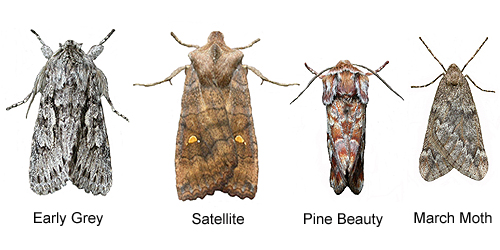 |
|
| ... | ||
| Below are the ten species most likely to be seen in Nottinghamshire during the month, followed by some moths which are often recorded during the day. Remember that there are potentially more species which can be trapped, than are shown here. | ||
| 70.237 .... B&F 1917 .... Early Thorn Selenia dentaria (Fabricius, 1775) |
||
| Status .....Relatively common at most sites, including urban areas. There are two broods, with moths from both broods having quite different underside markings. | ||
| ... | ||
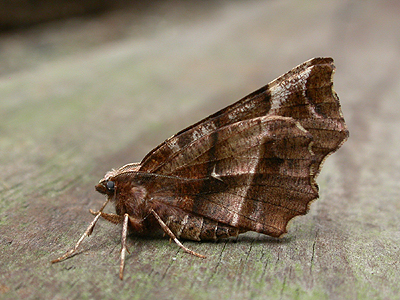 |
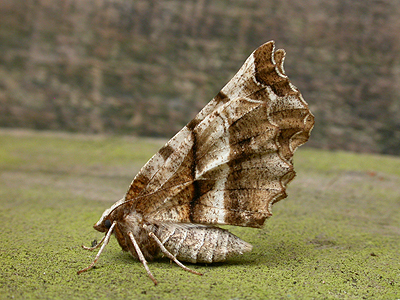 |
|
| 70.245 .... B&F 1663 .... March Moth Alsophila aescularia ([Denis
& Schiffermüller], 1775) |
||
| Status .....Flies early in the year and is certainly common at both Eakring and Sherwood Forest, but is certainly more widespread and found at most woodland sites. Will occur in suburban areas. | ||
| ...... | ||
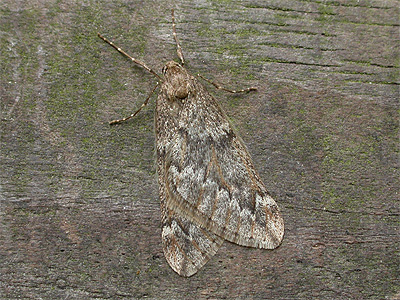 |
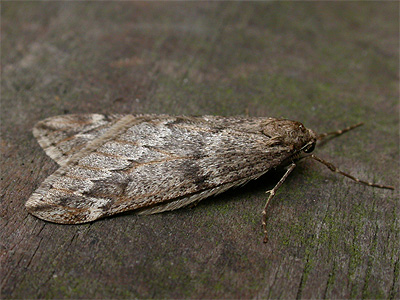 |
|
| 70.270 .... B&F 1947 .... Engrailed Ectropis crepuscularia (Goeze,
1781) ....
Formerly known as Ectropis bistortata |
||
| Status .....Probably quite common over most of Nottinghamshire, although there are few records from the Trent Valley among the records we have available to us. | ||
| .... | ||
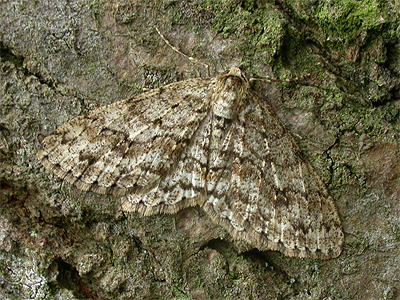 |
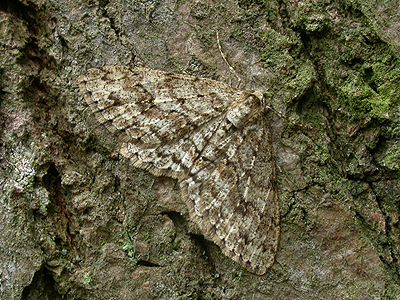 |
|
| 73.069 .... B&F 2243 .... Early Grey Xylocampa areola (Esper, 1789) |
||
| Status .....Quite common over much of Nottinghamshire, but rare (just about annual) at Sherwood Forest, which is probably due to lack of larval foodplant across most of the area. Will occur at MV light traps run in urban and suburban areas. | ||
| .... | ||
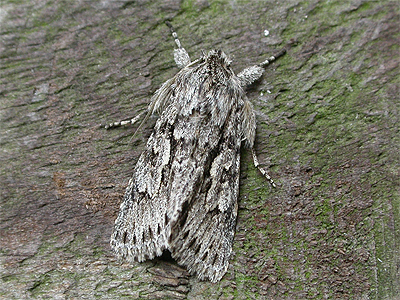 |
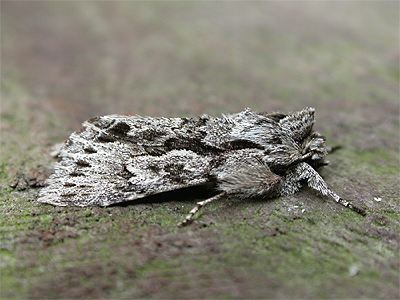 |
|
| 73.202 .... B&F 2237 .... Grey Shoulder-knot Lithophane ornitopus (Dadd, 1911) |
||
| Status .....First recorded in Nottinghamshire during 2003. Two records from Eakring in September of that year, were the second and third county records. Recorded twice more at Eakring in 2004 (including one on the trunk of a tree at Eakring Flash, between November 27th and December 31st 2004) with another record coming in March 2005. Now very firmly established and widespread in Nottinghamshire and probably still increasing. Regularly encountered on tree trunks during the Autumn months. | ||
| ...... | ||
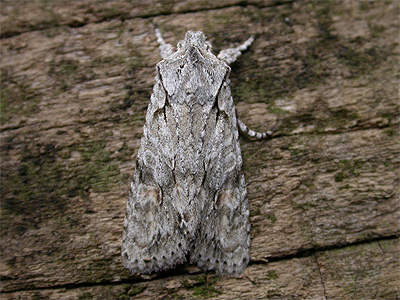 |
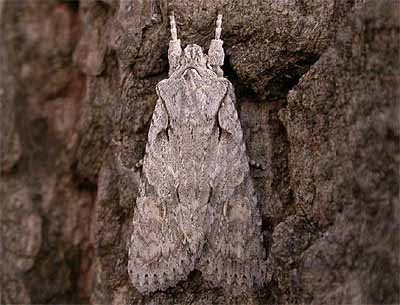 |
|
| 73.210 .... B&F 2256 .... Satellite Eupsilia transversa (Hufnagel,
1766) |
||
| Status .....Common at Eakring and throughout the Sherwood Forest NNR. Most records are from the northern-half of the county. | ||
| ... | ||
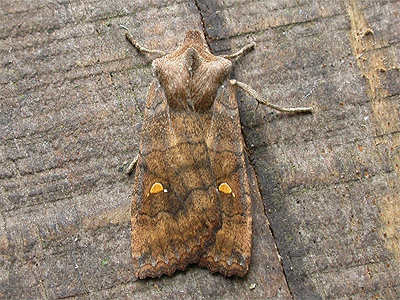 |
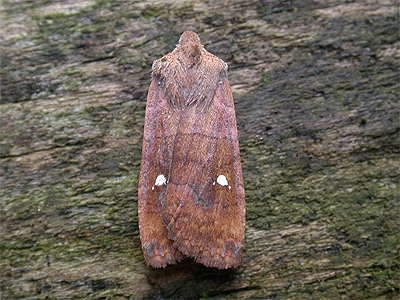 |
|
| 73.241 .... B&F 2179 .... Pine Beauty Panolis flammea ([Denis
& Schiffermüller], 1775) |
||
| Status .....Regular to MV light at several Sherwood Forest sites. Should be expected to occur near any area of Pines and should be much more widespread in Nottinghamshire than the distribution map suggests. Comes to light, even in urban locations. | ||
| ..... | ||
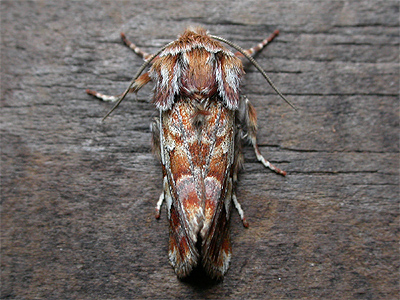 |
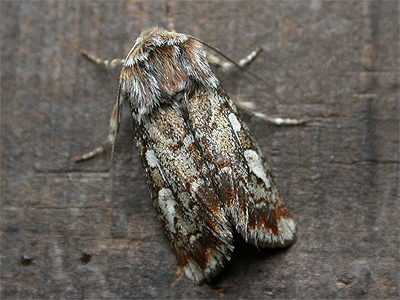 |
|
| 73.242 .... B&F 2188 .... Clouded Drab Orthosia incerta (Hufnagel, 1766) |
||
| Status .....Common, with a similar Nottinghamshire range as Common Quaker, with the two species both flying early in the year. There are few records from the Trent Valley area. | ||
| ...... | ||
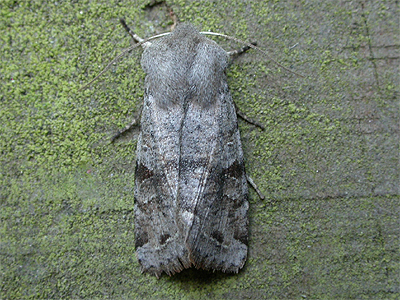 |
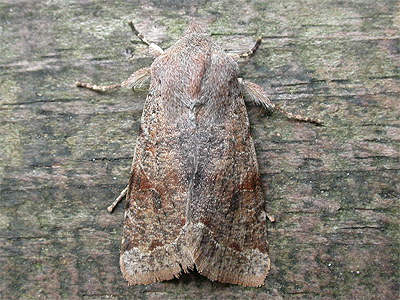 |
|
| 73.244 .... B&F 2187 .... Common Quaker Orthosia cerasi (Fabricius, 1775) |
||
| Status .....Very common and probably found in all parts of Nottinghamshire, including urban areas. This is certainly a common moth at Sherwood Forest, where large numbers are attracted to MV light. | ||
| ...... | ||
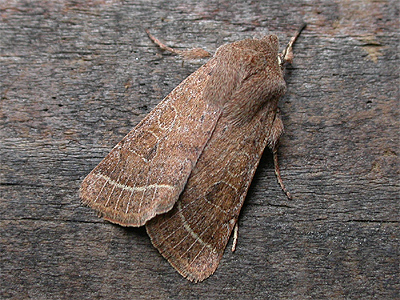 |
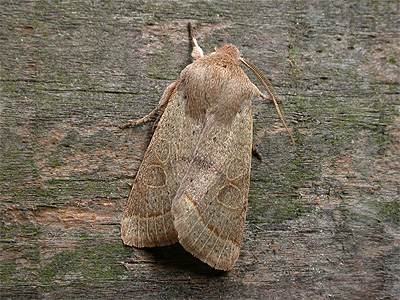 |
|
| 73.249 .... B&F 2190 .... Hebrew Character Orthosia gothica (Linnaeus, 1758) |
||
| Status .....Common and found in most parts of the county, although not well recorded from south-eastern areas of Nottinghamshire. | ||
| ...... | ||
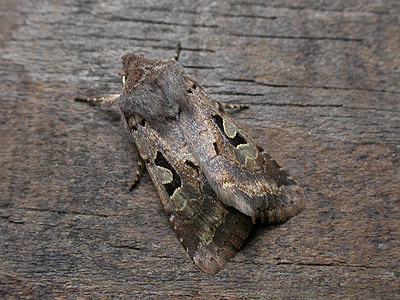 |
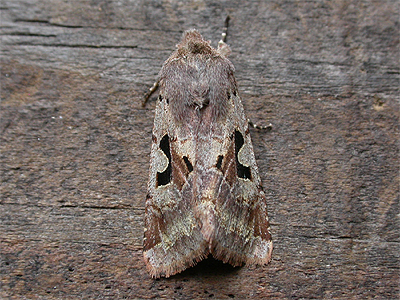 |
|
| Can't find your moth? Some other moths often recorded at MV light during March |
| .... |
| The following moths are also likely to occur during the month, although some may be more habitat specific and less likely to be recorded from suburban gardens. The number of potential species is much higher than the total shown here. |
| .... |
| Common moths often recorded during the day |
| ..... |
| The following moths are often encountered during daylight hours during March, either resting on fences, tree trunks etc. The Orange Underwing is purely a day-flying species, often seen fluttering around the tops of Silver Birch. |
| ..... |